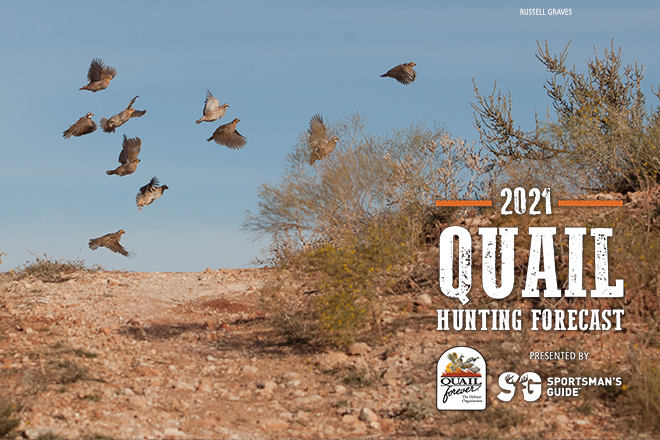 By Oliver Hartner
By Oliver Hartner
A wetter early spring and drier early-summer followed by heavy rains might have delayed nesting in some areas, but once the weather stabilized, it helped the habitat and reproduction cycle for late-season birds. Georgia quail hunters should see average to above-average survival rates for the 2021 fall season on well-managed habitat.
WEATHER AND CONDITIONS
According to Dallas Ingram, State Quail Coordinator for the Georgia Department of Natural Resources (DNR), “We had a pretty mild winter again this year. Areas in the northern part that were very wet last winter had better conditions, and they were able to get some good burns to improve habitat. Some of our more southern areas had difficulty burning this year so some of those areas will have heavier cover this winter, but where there was successional habitat in place, we heard good numbers of quail whistling during spring counts.”
Wet conditions in early spring and a slight drought in the early summer resulted in delayed nest initiation in some areas, but those conditions seem to have not been catastrophic. “Due to the early drought and heavy rains that followed, the mid-season hatch and survival appears to be down some but late season hatches have been great. We have lots of reports of broods for late August and September,” Ingram says.
HABITAT, BROODS, AND COUNTS
In parts of Georgia where habitat management projects and initiatives are taking place, the outlook remains positive going into the 2021 fall season.
Ingram says, “Because of the consistent rainfall for most of the summer, fall cover is looking good, and with such good growing conditions the cover could be a bit heavy in places this year.” Hard data gathered this past spring continues showing a correlation between land management and year-to-year stability or improvement in the quail population. “Numbers have been increasing for the past several years, and it is looking like we should have good numbers for our upcoming fall covey counts.” Fall covey counts will begin in mid-October and the data will be available on the Georgia DNR website.
TOP SPOTS
According to Ingram, “Southwest Georgia historically has the highest concentration of quail in the state and has good private and public opportunities, but don’t overlook central Georgia and the east Georgia area around DiLane Wildlife Management Area (WMA). Many of the best public land opportunities are quota only, so be sure to apply for those hunts. Applications open in October for this season’s hunts, and you can apply at
https://quotahunt.gooutdoorsgeorgia.com.”
INSIDER TIPS
Ingram says, “Early season in Georgia can be hot so pace yourself and bring plenty of water for you and your dogs. Snakes can move at anytime during the season on warm days so be aware. One comment that we often get about public land is that the cover is dense and difficult. Do not expect the same hunting experience you find on a well-manicured private plantation. Our long growing seasons and good rainfall produce plenty of cover, which can include lots of briars. A good pair of brush pants is a must on many of our public lands.”